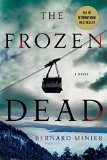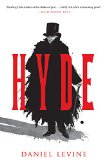Summary | Excerpt | Reviews | Beyond the book | Read-Alikes | Genres & Themes | Author Bio

"Who is it we see when we see ourselves?"
Gaute Heivoll asks this question of himself twice in Before I Burn – but is he really asking himself? Heivoll has produced a work that blurs the lines between memoir/autobiography, history, historical fiction, and purely imaginary fiction. He tells of an actual series of events that happened in 1978, in the very month he was born, using the memories and stories from his youth, interviews with those who were part of the events, and public documents. So this is a memoir about events in Heivoll's youth, his own growth, and his developing interest in writing about the pyromaniac that caused chaos in Finsland, Norway in 1978, right? Well, no. Gaute Heivoll insists that he has written a novel, although he does not include the novelist's usual disclaimer that any similarity to real persons is coincidental. However, the story is, at least in part, fiction, and Heivoll's sensuous descriptions and compelling dialogue prove him a first rate novelist.
Some may classify this as a crime novel, a mystery of sorts, but we are aware quite early in the story of the identity of the pyromaniac responsible for the 8 fires that terrorized Finsland in the summer of 1978. There is no need for the gathering of the possible "who dunnits" that underlies most stories in the crime genre. So, once again, what are we dealing with here? An additional layer in Before I Burn is that Gaute Heivoll, besides being the author, is an actual character in the story. Whether the narrator and Heivoll the character are the same is left ambiguous and becomes one of the elements of the experience: to paraphrase the character in the book, "Who is it I see when I see myself?" And one final, perhaps most interesting, layer is that the story is also about Heivoll's writing this very book: he describes its origins, the process of its development, and even his motivations for writing it.
The story alternates between Gaute Heivoll's narrative of own life and the story/history he is writing about the fires that surrounded the month he was born. In first person, Heivoll tells us about growing up in Finsland, going off to school in Oslo, dropping out when he realized he did not want to be a lawyer, his relationship with his father, and the revelatory moment in Mantua, Italy, when he realized that he needed to write this book about the fires - all of which ultimately boils down to the struggle that led him to accept what an elementary school teach told him: "You are a writer." Then in the third person, Gaute Heivoll - or, at least, the Gaute Heivoll who appears in the book - details the families affected by the fires 35 years before, tells us about the fire department, and, especially, lets us enter into the life of the fire chief, Ingemann, his wife, Alma, and their only child, a son named Dag.
Dag, in many ways, resembles the Gaute Heivoll we meet in the book: a talented student and an overachiever intent on success. Both are disillusioned, pursuing success on a traditional path, but they reflect that disillusion in different ways. Heivoll becomes a writer, while Dag becomes the victim of his own obsession with fire. In writing the narrative of Dag, Heivoll is writing some of his own story, especially when he is describing both his and Dag's relationships with their fathers, which, ironically, are the opposite of what the reader may expect.
So, Gaute Heivoll has given us a story which can be read on many levels: as memoir with reconstructed dialogue; as a people remembering a crucial time in their own history; as a mystery intent, not on discovering the culprit, but on exploring motivations and relationships. However, most of all, Heivoll has given us a mirror of our own responses to memory – whether we deliberately repress or invite it in to become a part of our deep selves. Some have called this kind of fiction "metafiction," described by Patricia Waugh, professor of English Literature and literary critic, as fiction in which the actual writing of the book itself is a major element of the plot. (See the Beyond the Book for The Long Song, by Andrea Levy, for another examination of metafiction.) In Before I Burn, Gaute Heivoll asks whether the memories of our own past and, by extension, the past of our families, are "objective" or are they constructs; artificial stories shaped by what we think "should" have happened? Heivoll does not answer this but succeeds in casting a shadow of doubt on personal and collective history.
Ultimately, it's not clear that the Gaute Heivoll, whose name is on Before I Burn's cover, is the Gaute Heivoll inside. Has he fictionalized himself in the course of the writing? The inevitable question he raises is if we all do this. "Who is it we see when we see ourselves?" This is, indeed, the question that will linger after you read his novel.
![]() This review
first ran in the January 8, 2014
issue of BookBrowse Recommends.
This review
first ran in the January 8, 2014
issue of BookBrowse Recommends.

If you liked Before I Burn, try these:

by Bernard Minier
Published 2015
Saint-Martin-de-Comminges is a small town nestled in the French Pyrenees. The kind of place where winters are harsh and unforgiving and where nothing ever happens. Until the winter morning when a group of workers discover the headless, flayed body of a horse, hanging suspended from the edge of a frozen cliff.

by Daniel Levine
Published 2015
A reimagining of The Strange Case of Dr. Jekyll and Mr. Hyde from the monster's perspective, Hyde makes a hero of a villain.
Your guide toexceptional books
BookBrowse seeks out and recommends the best in contemporary fiction and nonfiction—books that not only engage and entertain but also deepen our understanding of ourselves and the world around us.